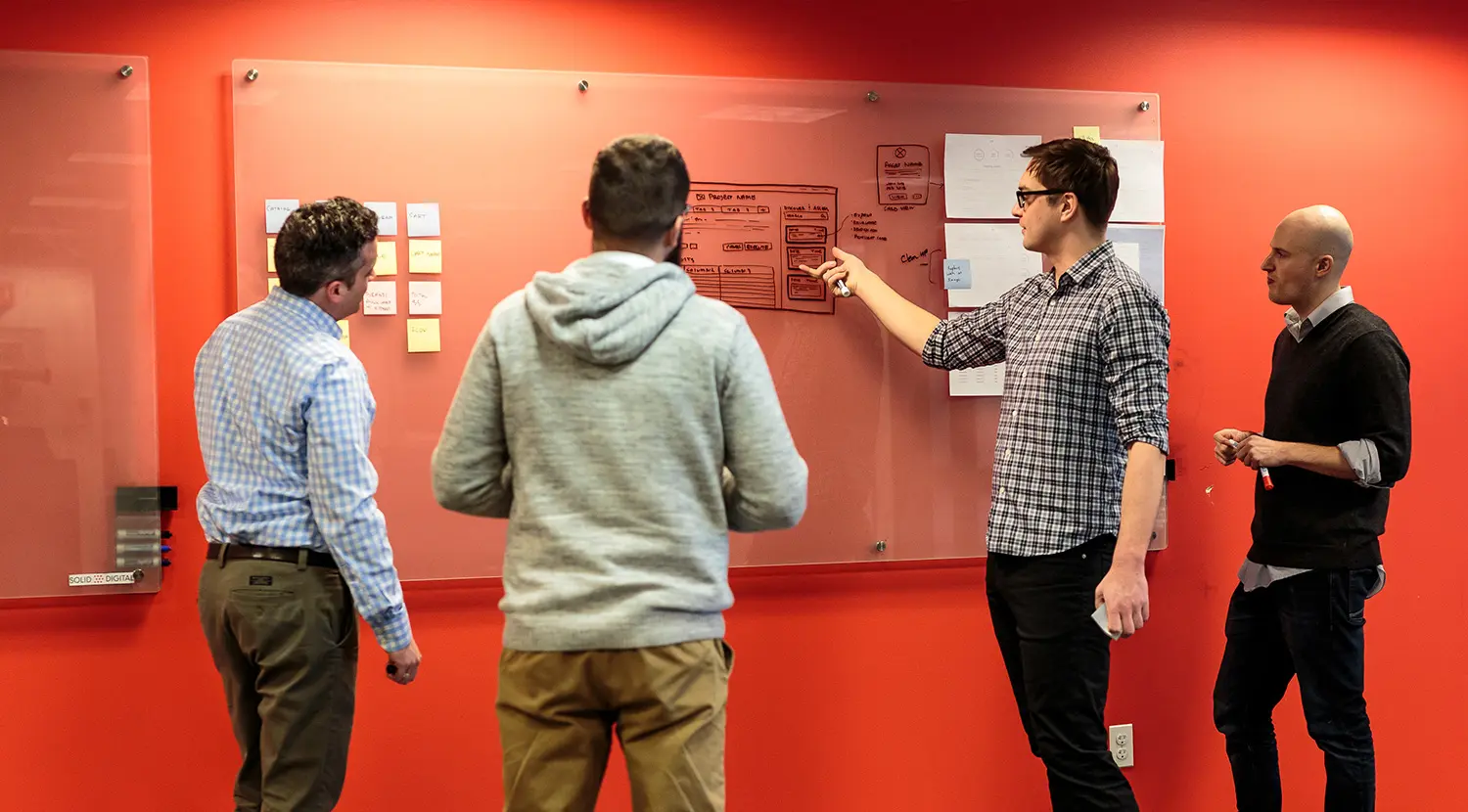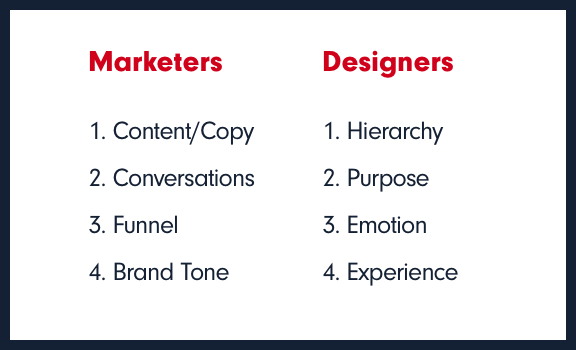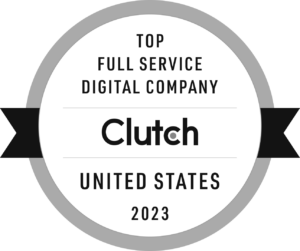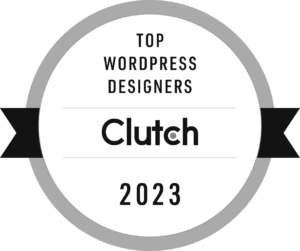Have you ever asked yourself these questions?
- Why is no one coming to our website?
- Why are people leaving our site right away?
- Why is no one filling out our contact form?
- Why does marketing need to be a part of a website “design?”
- Why doesn’t our website stand out amongst the competition?
- Why is it so difficult to update my site?
If yes, don’t worry, you’re not alone! Many businesses struggle with these questions and I totally get it. These issues are better understood through the lens of design and marketing collaboration. Let me take you back to yesteryear for a moment, maybe you can relate…
Why should you care? (My Personal Backstory)
Over the past 9 years, I’ve had the pleasure of designing and successfully launching hundreds of websites for a wide variety of industries – pretty crazy when I think back on this. During my infancy as a designer, I was heavily focused on the visual appearance or the “wow” factor. This is not to say I was a selfish designer, as I was very much thinking about the person using it and their emotional response when they first landed on a page.
Entering my “design adolescence” years, I became more interested in the process behind website design and how everything fit together “under the hood,” structurally. This allowed me to understand and appreciate all of the moving parts and the importance of these components seamlessly working together (e.g. sitemap, wireframes, static designs, front-end code, CMS integration, etc.).
As I matured into “designer adulthood,” I started seeking out a website’s purpose and specific outcomes needed to deliver real value. I became obsessed with the entire user experience journey. I knew if I truly understood who was using the site, what they were looking to accomplish, where they were coming from, the device they were using, etc., I could design an experience that was simple, useful, enjoyable and (most importantly) solved a problem.
As our team at Solid Digital has grown, I’ve had the pleasure of being surrounded by a diverse, talented group of people who have given me new perspectives on the importance of early collaboration and the impact a website design can have on a larger marketing or business plan. When everyone is aligned on the overarching business strategy and comes together to create a plan that bakes in Marketing & Design, you then achieve the highest returns on your website design investment.
The Problem
“We just need a website design.”
This could mean, “we do not care what it looks like, we just need it to bring in leads,” or “we want an award-winning design” without considering it as an integral component of a larger plan or initiative. The difference between design and marketing is not always perfectly clear.
I recently watched a webinar called “The importance of design and marketing collaboration with Dan Slagen of Crayon.” Dan did an excellent job of explaining the differences:
The Solution
1. Solve the problem together
Depending on the type of website project, the team should include an expert from Design, Marketing, Technology and of course a Project Manager to hold everything together. Each person will see the problem from a different angle. Specifically, a designer will zero in on the user and their emotional experience, while a marketer will be thinking ahead to the conversion/communication with the customer.
Consider the problem(s) you’re trying to solve and come up with as many ways possible to solve this problem together.
I’m a firm believer in that there are many, many, many solutions to a particular problem—finding the right solution is where your team comes in. Work side by side throughout the project, allow for collaborative thinking and critiques on solutions to ultimately narrow down & identify the one that everyone feels will have the greatest impact.
- Include key players throughout the project (Design, Marketing, Technology, PM)
- Foster collaborative thinking
- Consider the problem from different perspectives
- Create as many possible solutions as you can
- Identify the solution everyone on the team aligns with as having the greatest impact
2. Differentiate yourself
It pains me to see so many business websites today that look so much alike. One might say there are too many companies taking shortcuts by using design templates or themes… that’s no excuse. You can and should customize your website to the nth degree and make them your own. From a website design & marketing perspective, what are you saying that’s different than your competition, what do you offer that’s different, how will potential customers remember you over the other 10 companies they were researching? Start by studying your competition and purposely going in another direction – within reason of course.

Take Zappos.com for example, aside from their websites friendly vibe/visuals, they express their value of delivering WOW through service – which is a message you won’t find on any other e-commerce site. Of course everyone knows about their amazing free return policy, but they also have a customized explainer video for almost every pair of shoes on their site. This experience provides the customers with more information than expected! The idea here is to intentionally think outside the box and put yourself in a different lane (still on the same road) than your competition. Doing this, will elevate and communicate the value of your brand.
- Study your competition
- Think outside the box – do the unexpected
- Say something your competition isn’t
- Communicate your value
- Invest in custom illustrations, photos and/or graphics
- Showcase your social identity
3. Incorporate design thinking
Design thinking is a process for creative problem solving, which allows organizations to focus on the people they’re creating for. It is a non-linear, iterative process that seeks to understand users/customers, challenge assumptions, redefine problems and create innovative solutions to prototype and test. This concept has gained a ton of recognition over recent years due to the efforts of the geniuses at d.school & IDEO.
“Design thinking is a human-centered approach to innovation that draws from the designer’s toolkit to integrate the needs of people, the possibilities of technology, and the requirements for business success.”
— Tim Brown, CEO of IDEO
This process can be used throughout your organization, but it is highly valuable when applied to a website design. An effective website should be catered to the person using it, but must go beyond that. Why are they there in the first place, what is their job to be done, what happens after they leave, how do they feel throughout this experience, how can we make it better? These are the questions marketers and designers alike need to consider, as both disciplines should focus on building empathy and providing solutions for the end user or customer. Design thinking gives you this collaborative method/framework by putting people at the center of the problem solving process. There are many iterations of Design thinking, but d.school does a really good job of breaking this down into 5 phases:
- Empathize – with your users
- Define – users’ needs, user problem, and your insights
- Ideate – by challenging assumptions and creating ideas for innovative solutions
- Prototype – to start creating solutions
- Test – solutions
4. Experiment & test multiple solutions
The initial solutions you come up with for your website may not always work out the way you planned – hey that’s life, isn’t it? The good news here is that there are so many tools available now that help you test, track, and measure your efforts – a few of my favorites being Google Analytics, SEM Rush, Hotjar, Google Optimize, Verify (now Helio), and InVision.
Never let your website just sit there, creating positive website performance requires constant attention and analysis. Meet as a team to regularly review your website’s performance and plan for ways to continue to iterate and test new approaches from a design & marketing perspective. Try out different messages, visuals, resources and monitor what’s working and what isn’t – based on your intended goals/objectives.
- Get yourself some analytic & testing tools
- Regularly review analytics as a team
- Test out various calls to action – be sure they make sense 😉
- Try out different types of information that people can take with them
- Evaluate what’s working & what isn’t
- Talk to your customers!!! Find out what you might be missing. (This point alone is worth another blog post… coming soon)
5. Serve a greater purpose
Because design is at my core, I still catch myself putting most of my energy into a superior design experience for the user – hell, that’s my job isn’t it?
Well, yes and no.
There are a lot of factors that go into a website design that must be considered; time, budget, goals, stakeholders, resources, etc.. This is not to say the experience shouldn’t be exceptional—it should—but when designing a website you must work together to not only clearly understand goals & objectives, but also how this website supports the broader business objective. Keeping the business at the forefront of every decision will ultimately help you generate greater impact and overall higher performance – as it pertains to the main purpose.
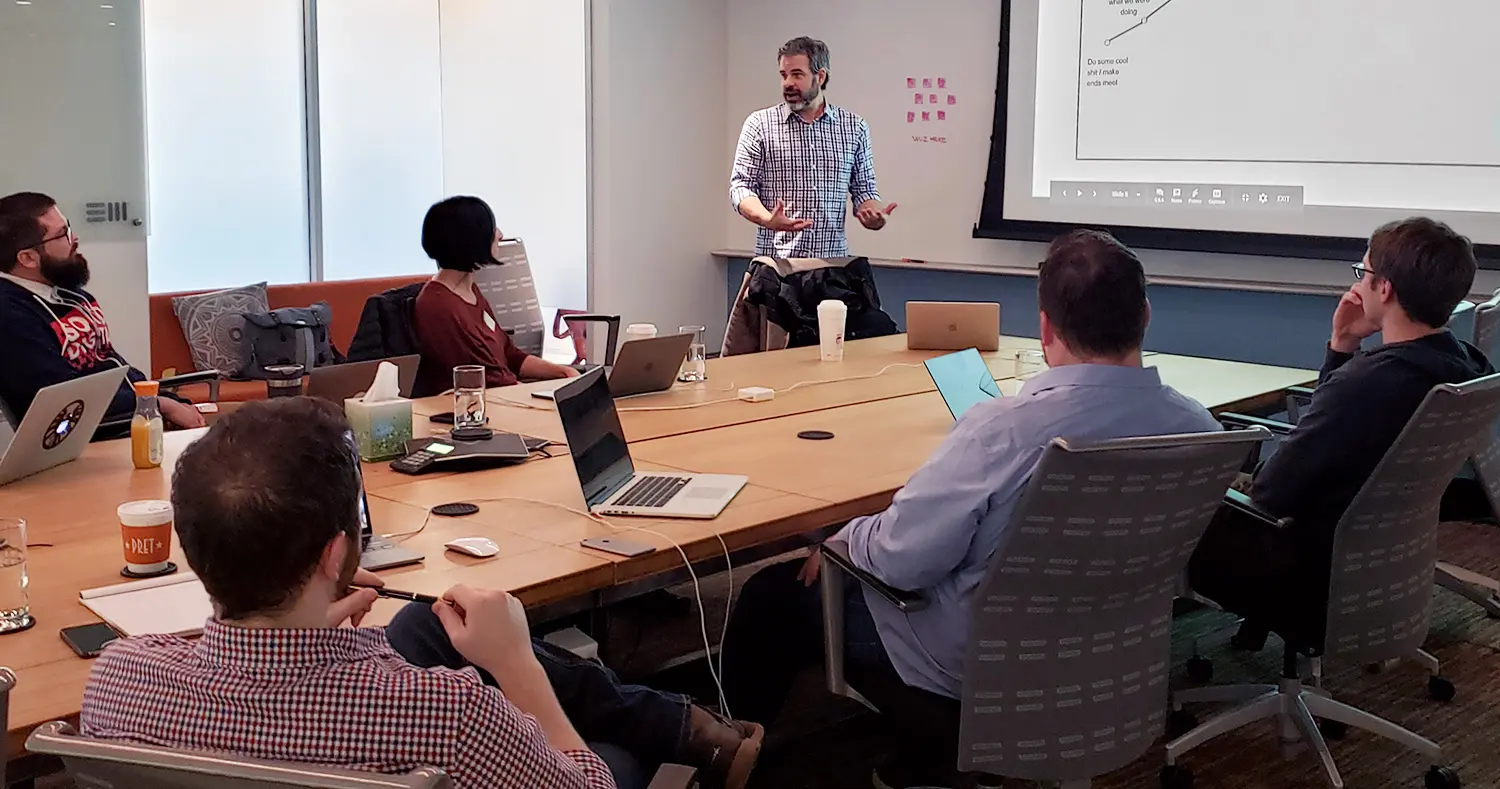
At Solid Digital, we believe what gets measured gets done. The design and marketing teams work side by side to identify the KPI’s that monitor the greater business impact of your website. In my experience, even if you have a highly functional website, over time you will see a gradual decrease in your performance if you just let it sit there.
For most businesses, a website plays a much larger role in supporting the growth of a company – making its performance highly valuable to an organization. No matter what you’re looking to do with your website your team (or an extension of your team) will need to continue to apply “positive forces.” To get the results you’re looking for, keep the engine running, conduct routine maintenance, search relentlessly for creative upgrades, and most importantly, position the site to serve that greater business purpose.
In short:
- Get aligned on the required impact & performance
- Identify – purpose, goals, metrics, KPI’s, testing opportunities, etc. (high-level & granularly)
- Look at what KPI’s are currently being tracked
- Know how the site fits into and supports the bigger picture / strategy
- Have a marketing & design post-launch plan to keep the momentum going
Design & Marketing, the unstoppable duo
I highly encourage your business to unleash the power of marketing & design collaboration on your next project. Stop thinking of these two departments as separate silos. By combining the expertise of these disciplines, you will position your website to be driving force in your business and set yourself up for positive Digital Growth now and in the future.
